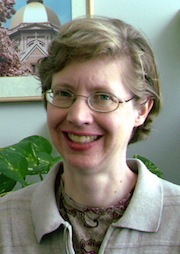Study suggests potential association between soy formula and seizures in children with autism
A University of Wisconsin–Madison researcher has detected a higher rate of seizures among children with autism who were fed infant formula containing soy protein rather than milk protein.
The study found excess seizures among girls and in the total sample of 1,949 children. The soy-seizure link reached borderline significance among boys, who comprised 87 percent of the children described in the database under study.
Seizures — caused by uncontrolled electrical currents in the brain — occur in many neurological disorders including epilepsy, Alzheimer’s disease, Down syndrome and autism.

Cara Westmark
About 25 percent of infant formula sold in the United States is based on soy protein.
Study author Cara Westmark, a senior scientist in the UW–Madison Department of Neurology, says her investigation was sparked by mouse studies of a drug that, it was hoped, would inhibit seizures by blocking signals that excite nerve cells. “It was pure serendipity that we happened to look at soy,” she says.
To simplify the mouse study, she replaced the standard lab chow, which had a variable composition, with a diet containing purified ingredients. Unexpectedly, that diet reduced the rate of seizures by 50 percent compared to standard chow, Westmark says.
“We were intrigued that a dietary alteration was as effective as many medicines in reducing seizure incidence and wanted to pursue that finding,” she says. “We found that the main difference between the diets was the protein source. The standard diet was soy-based, while the purified diet was casein, or dairy, based.”
The mechanism of action is unknown, but Westmark points to the high level of plant-derived estrogens in soy products as a possible cause of the excess seizures.
“We can say that we have a potential association between the use of soy-based formula and seizures in autistic children; we can’t say that this is cause and effect.”
Cara Westmark
People eat a lot of soy products, and when Westmark began to look for the effect in people, she decided to focus on infants, who may consume nothing but formula. Knowing that people with autism have a higher rate of seizures, Westmark turned to a database from the Simons Foundation Autism Research Initiative.
And that led to the new study, published today in the journal PLOS ONE, which showed that children with autism who were fed soy formula had 2.6 times as many febrile seizures as the children fed non-soy formula in the database. That means 4.2 percent of the soy group had a seizure associated with a fever, compared to 1.6 percent of the others.
To put it another way, the vast majority of both groups did not have seizures. “This is not saying that all autistic children who eat soy-based formula are going to develop seizures,” says Westmark.
And yet that increase is worrying, Westmark says. “The prevalence of autism is increasing and currently affects one American child in 88. Soy is a widespread ingredient in many food products and 25 percent of infant formulas are soy based, so this is something that needs to be studied. If the child is lactose intolerant, there are alternatives that a pediatrician can recommend.”
The study, Westmark says, was not the kind of randomized clinical trial that can prove causation. “We can say that we have a potential association between the use of soy-based formula and seizures in autistic children; we can’t say that this is cause and effect. We were fortunate to be granted access to the SFARI database, but it was not set up to answer the questions we were asking.”
Although it’s possible that seizures could also be more frequent among children who consume soy formula but do not have a developmental disability, “There is no data available at this time to support that,” Westmark says. Still, the study raises concerns, since seizures cause neurological damage and repeated seizures — epilepsy — can develop into a lifelong problem.
“This needs to be studied more thoroughly,” Westmark says. “If soy formula is lowering the threshold for seizures or increasing the incidence of seizures, we need to know that.”



